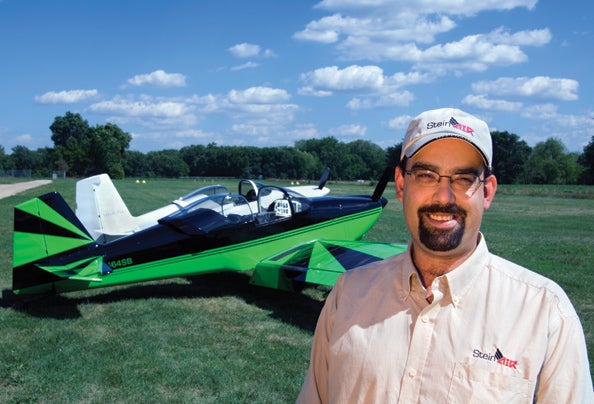
Isn’t it amazing that we now ask which autopilot should I buy rather than should I buy an autopilot? Ten or 15 years ago, an autopilot wasn’t a locked-in purchase except for high-end homebuilts-the Lancairs and Glasairs, for example-in part because the available equipment was heavy and expensive. Now even weight-limited Light Sport Aircraft are getting affordable, lightweight pushbutton automation through modern autopilots.
The rise of the autopilot is, I think, a good thing. It does a much better job of flying the airplane than the pilot, at least during those phases of flight when the human’s attention wanders. Let’s face it: After 30 minutes of straight-and-level flying the charm and the challenge have pretty much worn off.
As is true of the electronic flight instrument system (EFIS) industry (see our roundup in the June issue), development of autopilots has become a steady, incremental process-not as many fits and starts as we’ve seen before. One trend continues: integration of EFIS brains and autopilot-servo brawn without an intermediary processor. This eggs-in-one-basket approach, where the EFIS drives the servos directly, has become increasingly acceptable to builders. Not too many years ago, pilots who regularly fly IFR would balk at the theoretical loss of redundancy these integrated systems entail. But attitudes change. Strong system reliability has had a positive effect.
All of this is not a prelude to suggesting that there’s nothing new in autopilots. Let’s check in with each of the major manufacturers (and consumers, to be totally correct) to see what’s up.
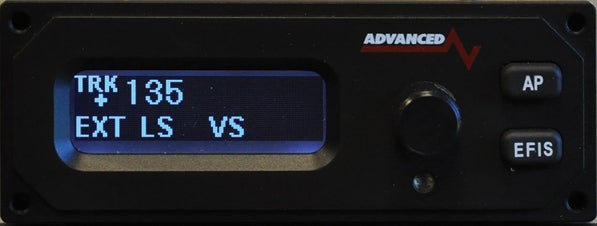
Advanced Flight Systems Pilot (the blue screen is new as of last year) in “flat pack” form.
Advanced Flight Systems
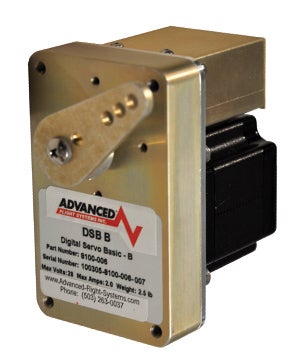
Advanced Flight Systems servo.
Advanced Flight Systems previously partnered with TruTrak Flight Systems, arguably the leader in Experimental-only autopilots, for a branded autopilot used with its various EFISes. The AFS Pilot is a two-axis autopilot based on the TruTrak DigiFlight II series, but incorporates software and hardware changes that allow much of the autopilot management-setting desired heading and altitude, for example-to be accomplished through the EFIS. When coupled to an external GPS or nav/com such as a Garmin SL30 or the GNS/GTN-series boxes, the autopilot will have the ability to fly whatever course or approach the system is being fed.
In addition to following flight plans both laterally and vertically along with coupled GPS and ILS approaches, the AFS Pilot can simply fly the altitude and heading bugs on the EFIS screen itself, which allows you to manually drive the airplane around the sky. By having the separate autopilot controller in the panel, the AFS Pilot also adds a layer of redundancy. Even without the EFIS in the loop, the AFS Pilot can be used to hold heading and altitude, climb or descend at a set rate, and follow GPS navigation.
Installation is straightforward with the provided mounting kits and brackets as standard for most typical aircraft. List price is $4950 and includes the servos, mounting hardware and controller. The servos and controller may also be purchased separately.
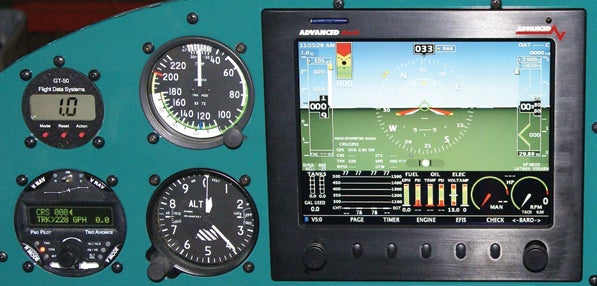
While Advanced Flight has its own autopilot, the company’s EFISes will output full data streams to other autopilots such as this Trio Pro Pilot.
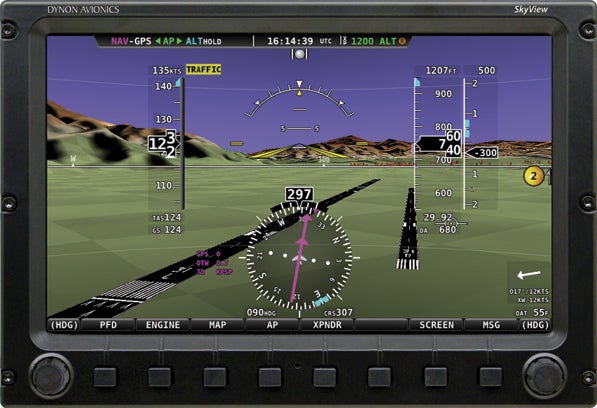
All of the autopilot functions are handled on screen with the new SkyView system.

Dynon AP74 control head. There is also a horizontally oriented version.
Dynon Avionics
Dynon’s decision to support only its own autopilot servos was controversial at first, but because the company has continued aggressive development and refinement of the software, the product is formidable. Moreover, worries about a lack of system redundancy have been answered in SkyView; this system can be configured for significant redundancy where the first-generation Dynon systems could not.
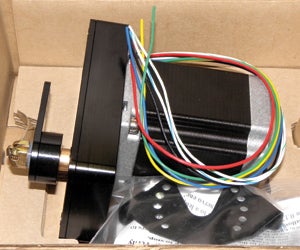
A Dynon servo, fresh out of the box.
Dynon continues to sell its autopilot a la carte. Servos are $750 each, available in lever-style and capstan. These servos work on all Dynon EFISes and combined engine monitor/EFIS configurations except the D-60/D-6 backup instruments. In addition, to get the most out of the autopilot with the first-generation Dynons, you’ll want to spend the $450 to get the AP74 Dedicated Autopilot Interface Module, which gives you direct access to autopilot mode handling and a Value knob. It’s important to understand that the autopilot driven by the legacy Dynon systems will not follow ILS or vertical GPS steering commands. It will follow GPS Steering (GPSS) commands from an outboard IFR navigator but you’ll need the optional HS34 expansion box-that’s where the ARINC 429 conversion takes place.
SkyView buyers have it easier, as that system was designed to drive an autopilot from the outset. What’s more, the SkyView’s twin, multifunction knobs and greater number of hot keys allow autopilot management to remain on the top line, so to speak. You won’t have to go digging to change modes. Right now, the SkyView autopilot will perform most expected tasks, including heading hold, vertical speed hold, altitude capture, GPS basic nav, VOR/LOC following and GPS steering (the last only with an optional ARINC 429 converter module). Dynon is working on GPS Vertical capabilities, which would allow the system to fly fully coupled GPS approaches.
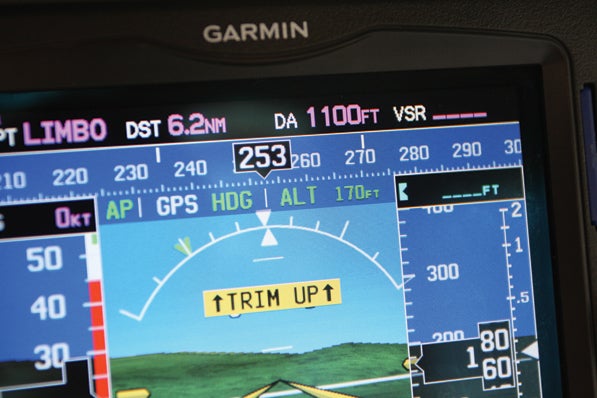
One advantage of autopilot integration is mode and advisory annunciation. Here, a GX Pilot sends the signal to the Garmin G3X PFD that the autopilot needs nose-up trim.
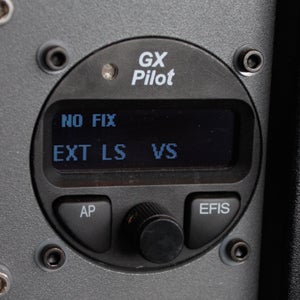
Garmin GX Pilot.
Garmin
Like Advanced Flight, Garmin doesn’t make its low-end Experimental autopilot-TruTrak does. We say “low-end” only to differentiate the GX Pilot from Garmin’s GA-bound offerings, which it designed and produces in house. In most ways, the GX Pilot acts like the AF Pilot. It receives a massaged data stream from the EFIS, in this case a G3X, and flies the airplane to make the data happy. (It won’t be long until the mood of our various computers is important.)
Actually, Garmin goes one level deeper. The GX Pilot is intended to be manipulated solely by the EFIS. In normal operating conditions, the pilot never touches the GX’s control box. Autopilot turn-on and mode switch are all performed on the G3X Primary Flight Display (PFD). Because the G3X inherently has ARINC 429 data compatibility, the system can innately fly any mode or approach sent out by an external navigation source. It can also follow the G3X’s internal GPS laterally and fly calculated VNAV flight paths.
The GX Pilot can be purchased from TruTrak through its dealers for $5200 plus brackets.
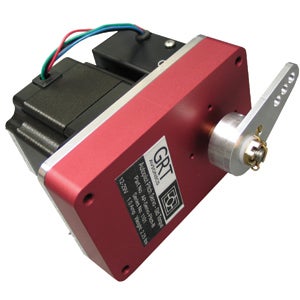
Grand Rapids Technologies’ servo. It talks directly to the GRT Horizon EFIS through a serial connection; no intermediary box is used.
Grand Rapids Technologies (GRT)
Grand Rapids’ attitude seems to be: whatever works for you. The company’s EFISes have long been able to spit out ARINC data streams that sophisticated autopilots can interpret and fly. In fact, GRT arguably led the way with external-autopilot functionality, giving its Horizon series EFIS a strong sense of communication with outboard autopilots from both Trio and TruTrak.
Now into the mix come GRT’s own autopilot servos, introduced in 2010. The servos are just beginning to ship. We’re told that they have passed early flight testing with flying colors, and the fully capable autopilot will be available to customers simply by installing the servos, as the functionality is included with the EFIS software. We cannot comment with firsthand knowledge because the product is just beginning to ship, but it appears installation will be similarly easy to others in the field.
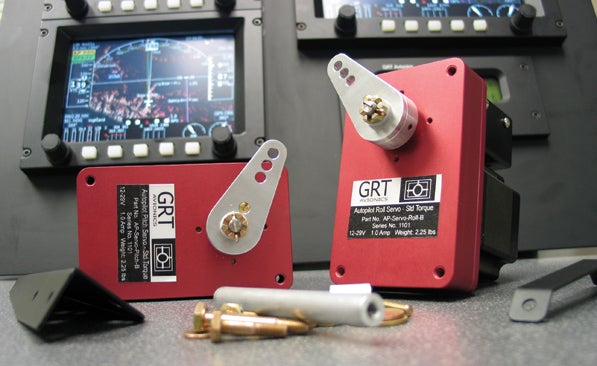
GRT’s stepper-motor servos will be available with mounting kits for the most popular aircraft models.
You can expect the same functions as with other fully integrated systems. In fact, the breadth of the system’s capabilities will be limited only by the inputs. The current Horizon software allows any autopilot to fly heading or track, hold altitude, climb or descent on vertical speed or indicated airspeed, capture an altitude, follow basic GPS and GPSS lateral steering commands, as well as GPSV and analog (ILS/LOC) vertical signals. A synthesized approach feature also allows the Horizon EFIS to generate its own flight path to any runway end in the database, and the autopilot will follow this path.
Prices start at $850 per servo, which are shaped similarly to the TruTrak servos currently on the market. (The same can be said for the Dynon servos, for that matter.)
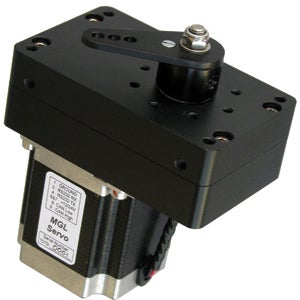
MGL Avionics servo.
MGL Avionics
MGL Avionics is also in the position of offering both its own autopilot as well as interfacing nicely with both Trio and TruTrak. Like most others, its branded autopilot uses a now standardized stepper motor design-that is, if you have TruTrak brackets around, the new MGL servos will fit. If you purchase the servo package (comes with a generic pushrod install kit) and add it to any MGL EFIS, you will end up with a fully functional autopilot. Currently available on the Enigma/Odyssey and Voyager EFISes, the software for the small XTtreme EFIS will also have autopilot functionality added to it in the near future, we’re told.
To be honest, there aren’t many of these systems flying in the U.S., though the number is growing. Prices start at $995 per servo. Yaw damper optional.
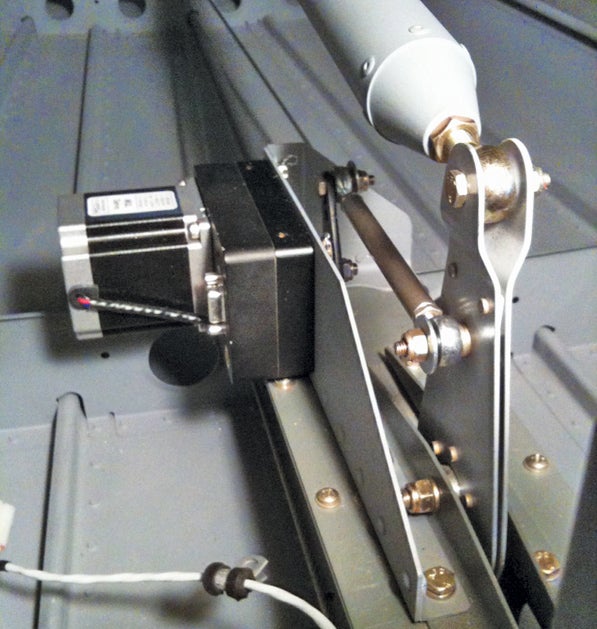
MGL Avionics pitch servo installed in an RV homebuilt.
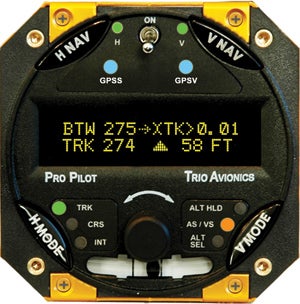
Trio Pro Pilot GPSS GPSV.
Trio Avionics
Trio has seen a flurry of activity over the past year. The ProPilot, which was relatively new last year when we looked at autopilots has matured into a desirable product. Trio also recently announced a specialized version of its ProPilot, which interfaces nicely with the Garmin G3X.
Trio is virtually the only manufacturer of autopilots in sport aviation to use an actual servo motor (most others use stepper motors) with an independent clutch mechanism. The company’s servos are somewhat larger than competitors’, though we must note they are also lighter. Mounting has gotten easier with the Trio, as the company now offers custom brackets for the roll servo in most Van’s RV aircraft. Trio still offers its standalone wing leveler and altitude hold autopilots along with accessories such as automatic pitch trim. The autopilot offerings from Trio are available in a number of different configurations and layouts. The Pro Pilot is offered in both a standard radio stack mount as well as 3.125-inch round format.
Prices range from $1700 for single-axis autopilots to $4500 for a well-equipped ProPilot.

Trio Pro Pilot rack mount.

| Trio altitude hold system and servo. | MGL supports the Trio Gold Standard servo (shown here). But the company is also developing its own line of servos. |
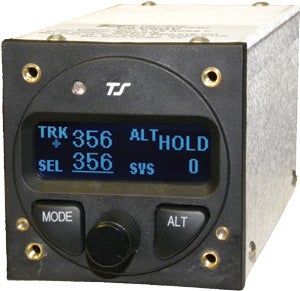
TruTrak DigiFlight II-VSGV.
TruTrak Flight Systems
TruTrak is still handily maintaining its spot as the industry leader in autopilots. As you’ve no doubt noticed, many other manufacturers are offering autopilots that are branded versions of a TruTrak autopilot to complement their EFISes. TruTrak still offers a full range of products from single-axis autopilots all the way to its top of the line Sorcerer along with a number of optional accessories such as automatic pitch trim and yaw dampers. It also offers a new Auto-Level button that can be added to most of the TruTrak autopilots.
The Auto-Level button is meant to be a last-resort, save-your-behind type of device that you push if you manage to get yourself into a situation that you can’t get out of. When you punch the blue Auto-Level button, the autopilot will automatically place the airplane into a normal wings-level, neutral-pitch attitude (assuming you have a two-axis fully functional autopilot).
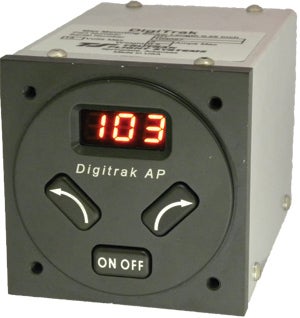
TruTrak Digitrak.
Along with a full range of autopilots, TruTrak offers a nice EFIS that incorporates full autopilot functionality at an attractive price point. In the area of backup instruments TruTrak still offers its ADI (which can include a built-in autopilot) and pictorial turn-and-bank indicators. The reason I mention these devices is that coming this year will be their replacement in the form of the Gemini series of solid-state instruments and autopilots. I’m loathe to discuss products that don’t actually exist yet, but given that this product is simply a modern replacement for current products, it’s worth noting.

TruTrak Sorcerer.
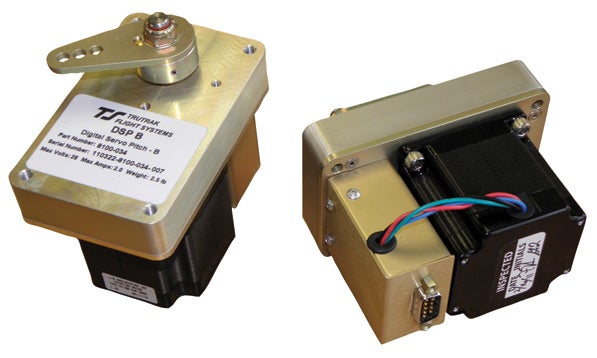
TruTrak servos.
A Growing Market
In closing, you may note that this year we didn’t review every specific model available from each and every manufacturer. This is due to the fact that the breadth of product offerings has grown to the point that this is simply not feasible in a few pages. Instead, we decided to focus more on each company and its general autopilot offerings.
We also didn’t specifically mention every single bit of functionality from each manufacturer and model, because most of them have matured to the point where they all offer similar bits of capabilities. One interesting thing to note is that we’re starting to see many people with electronic pitch trim in their aircraft also install the automatic pitch trim modules along with their autopilots. While currently available only from TruTrak and Trio, we anticipate that same functionality from other manufacturers in the future, as customers expect it. Nearly everyone who uses the automatic pitch trim from either company raves about it-probably
because more of them are flying fully coupled approaches where it’s common to change airspeed, and auto trim makes this process seamless.
The big news from the certified world is that “artificial intelligence” is being built into autopilots to keep the humans from doing something really rash, like entering a stall/spin or spiral dive. In these situations, the autopilot engages itself, rights the airplane and, for all we know, delivers a verbal slap across the forehead to the snoozing pilot. How long until this feature slips into the Experimental world?













